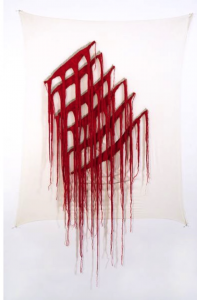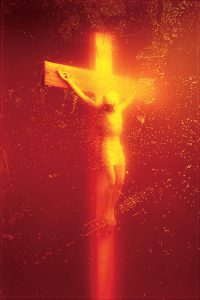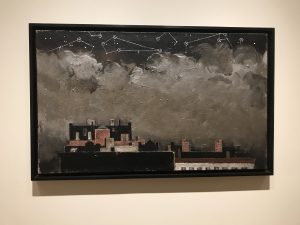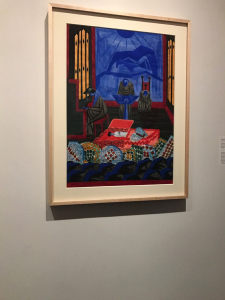Liz Collins, 2011, Worst Year Ever, New York City, dimensions (N/A) Knit–Wool and Silk.
Worst Year Ever by Liz Collins is a knitted piece that is shown at the New Museum. The exhibit was called Trigger: Gender as a Tool and Weapon which shows many different LGBT artist and bringing many different controversial ideas in society today, and how we as people view gender. With her piece specifically we as the viewer focus on the form, shape, and different colors in the piece. We see the red knitted wool hang from the white silk background, and the shape that the wool makes when hung. Color is also very important in the piece as well, when we see the color white we think of purity and when we see the color red we think of anger death, and in a sense she is putting the red wool over the white silk, and silk is also supposed to be very pure as well. Her work in specifically connects to the formalism perspective. “Formalist, however want the form and the form alone, to be attended by the maker and the perceiver: nothing else matters. Such as expressionism of emotion, narratives contained within works, functions of what work is designed to perform or references to the world a work may depict. (Barrett, 115). We as a society focus on knitting as a feminine quality, and Collins is trying to show us that there are no specific qualities for a specific gender. society believes that knitting is very fragile and delicate, and her piece is going against that idea and norm.




